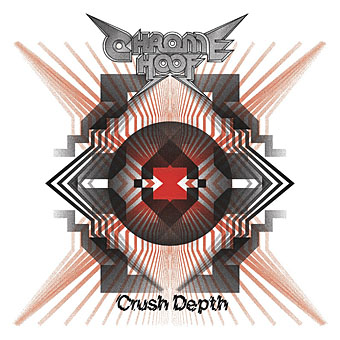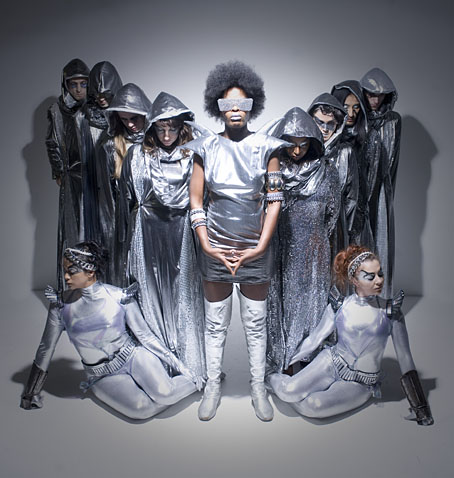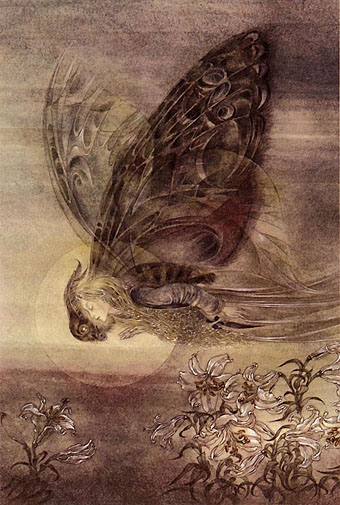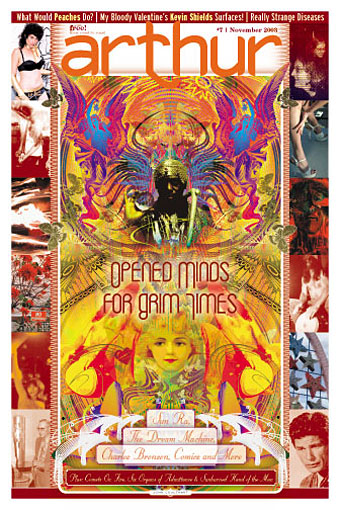Chrome Hoof photographed by Steve Bliss.
How to describe London’s Chrome Hoof? A difficult proposition but that hasn’t stopped people trying. The BBC labels them a “10+ piece glam clad death disco outfit” which isn’t a bad start. Their record label offers more detail:
Cathedral bassist Leo Smee started a bass and drums duo under the moniker Chrome Hoof with his brother Milo at the turn of the millennium to celebrate their shared love of mid-seventies funk and disco. Like sequined pied pipers, they recruited everywhere they played, building an army of multi-instrumentalists, including a full horn and string section, generating a devoted cult following with their legendary live shows. A veritable orchestra of musicians perform, decked out in futuristic monks’ robes, kicking it like some unholy hybrid of Sun Ra, ESG, Goblin, Parliament-Funkadelic and Black Sabbath, complete with choreographed dancers, actors taking vaudeville interludes, and a twelve-foot tall metallic ram dominating the dancefloor.

Crush Depth (2010). Design by Fergadelic.
Crush Depth is their latest album and the cover graphic here doesn’t convey the mirrored grooviness of the metallic gatefold package. Inside you get thirteen tracks with titles such as Witch’s Instruments and Furnaces and Anorexic Cyclops. Musically it’s like a collision between Magma, Igor Wakhévitch, Acid Mothers Temple and, I dunno…X-Ray Spex? The Androids of Mu? With disco rhythms…and riffs…and Mellotrons…and squalling synths…and harps…and violins…and Cluster! (Yes, Moebius & Roedelius Cluster). The Cluster-embellished track, Deadly Pressure, even manages to make a reference to “Old Ones” waking from their sleep in the depths of the sea, so I suppose we can throw Cthulhu’s squamous bulk into the mix as well. Chrome Hoof are so far beyond the legions of characterless indie clones they’re not even on the same planet. It makes a real change finding a band with this level of musical imagination and the technical authority to deliver the goods. One of the albums of the year, without a doubt.
Elsewhere on { feuilleton }
• The album covers archive
Previously on { feuilleton }
• A cluster of Cluster
• Chrome: Perfumed Metal
• Metabolist: Goatmanauts, Drömm-heads and the Zuehl Axis
• The music of Igor Wakhévitch








